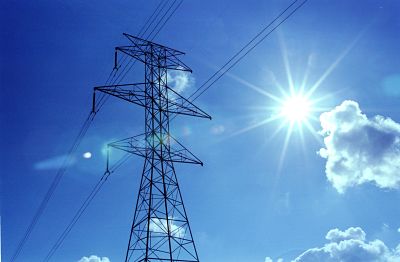IIT-Madras Set to Achieve Biggest Milestone in History with Its Project to End Power Outages in India
 As what seems to be the most pioneering project of the year, IIT-Madras is all set to remove load shedding forever from India.   If successful this project will help India become free of power outages.
As what seems to be the most pioneering project of the year, IIT-Madras is all set to remove load shedding forever from India.   If successful this project will help India become free of power outages.
IIT-Madras has come up with an innovative technique that will allow electricity boards to provide small amounts of uninterrupted power to every house in India. This small amount of power will be enough for all households to run three lights, two fans, and a mobile charger. This project will go on floors in a couple of months from now.
“It is based on a disarmingly simple idea: run a low-power direct current (DC) line from every sub-station into houses. This will feed into a separate meter, and then on to a set of lights and fans, or other low-power devices such as chargers or TVs. The rest of the house is run on regular alternating current (AC) power that is metered separately. The 100 watts of power fed into these DC lines is so low the electricity boards will never need to shut this down, except to repair technical faults. Blackouts are thus eliminated at one stroke, or converted to what IIT-M calls ‘brownouts’. As a side effect, it could also eliminate the need for inverters,†said a spokesperson from IIT-Madras.
Bhaskar Ramamurti, IIT-Madras Director, and Electrical Engineering professor, Ashok Jhunjhunwala, pioneered this project. Central Human Resources and Power ministries, 4 major electrical boards of India, and DC equipment manufacturers are also involved in this project.
After signing the memorandum of understanding with Tamil Nadu, Karnataka, Andhra Pradesh, and Kerala, IIT-Madras has set up a committee ( headed by the former Atomic Energy Commission chairman, Anil Kakodkar) to oversee the project’s progress.
“It is a simple idea but it required some thought and engineering.” Consumers who opt for this scheme will have to spend around Rs 1,000 for a device at home, apart from buying LED bulbs and fans that run on DC power. Jhunjhunwala and his team will meet consumers in Tamil Nadu and Karnataka this week. If they decide to buy into this idea, and agree to spend the money to take part in the project, the IIT-M technical team will start rewiring their houses and tweaking the transformers that feed into them,†said Ramamurti.
“It is a critical pilot project,†said former power secretary P. Umashankar.
“I see this as a game-changer for the country. In fact, it was Umashankar who seeded the idea in the minds of the IIT-M professors. Just before retiring, he had attended a conference organised by IIT-M. They had then shown him their work on DC power and solar energy, and told him how it would improve energy efficiency in the country. Umashankar told us that it will not solve our fundamental problem of blackouts,” said Jhunjhunwala.
Both Ramamurti and Jhunjunwala got in touch with their power systems colleagues to find out whether they can run DC and AC power in the transformers. Although the answer was negative, all of them came up with a unique solution.
“Run a low voltage AC line out of the transformer and then convert it into DC. Inside the home, the voltage is scaled down to 48 volts, which will then run lights and fans. The idea was stunningly elegant,” said Venkat Rajaraman, CEO of Solarsis India, which makes devices for houses and sub-stations.
This post was published by Nishant Sinha, co-founder of askIITians.
- Excited
- Fascinated
- Amused
- Bored
- Sad
- Angry
